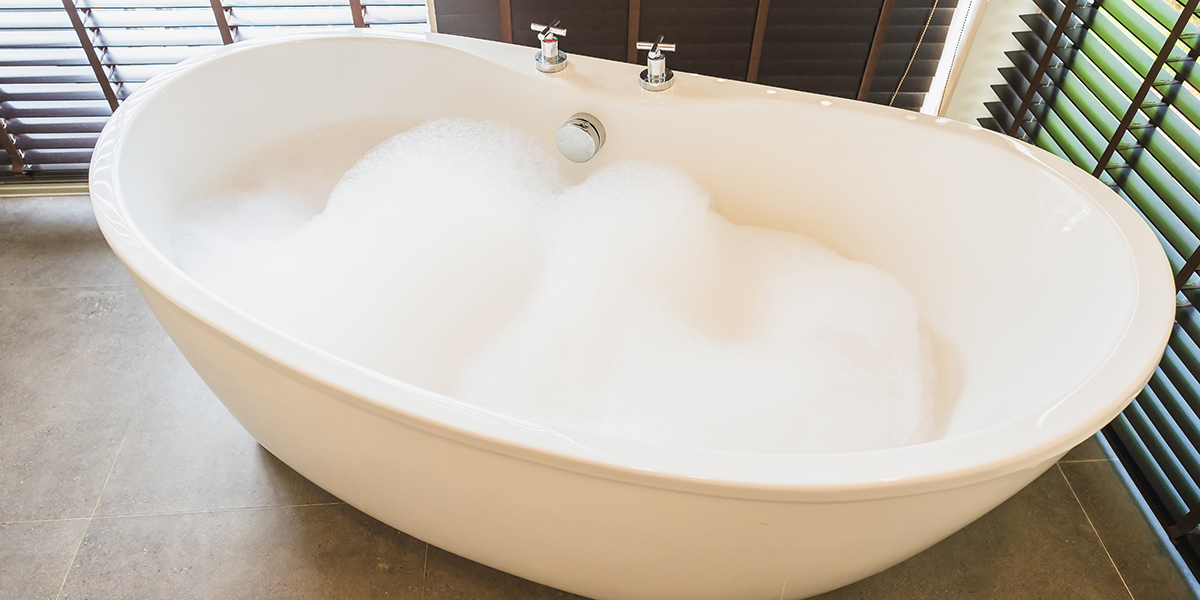The content which follows on the subject of What to Do if Sewage Starts Coming Up Through Your Bathtub is absolutely intriguing. Check it out for your own benefit and decide what you think of it.

Sewage back-up in the bath tub can be a traumatic and unhygienic issue for any type of home owner. Not only is it inconvenient, but it also positions severe health and wellness dangers and shows underlying problems with the plumbing system. Recognizing why sewage is showing up through the tub is crucial for taking ideal activity to address the trouble successfully.
Introduction to the Problem
Understanding the Problem
When sewer draws back up right into the bath tub, it's a clear indication of an issue with the water drainage system. The wastewater that should be moving away from your home is instead locating its back into your living space, which can lead to substantial damages and health hazards.
Prospective Causes
A number of aspects can add to sewer back-up in the bathtub. From blockages in the sewage system line to concerns with the plumbing facilities, recognizing the source is essential for locating a solution.
Usual Reasons for Sewage Back-up
Clogs in the Drain Line
Among one of the most usual reasons for sewage back-up is a clog in the drain line. This can take place because of the build-up of particles, oil, or foreign objects in the pipes, stopping correct circulation and causing sewer to support right into your bath tub.
Tree Root Breach
Tree roots looking for wetness and nutrients can penetrate sewage system lines via small fractures or joints. Gradually, these roots can grow and expand, causing substantial damage to the pipelines and leading to sewer backup concerns.
Aging Framework
Older homes may have obsoleted plumbing systems that are a lot more prone to corrosion, splits, and damage. As pipelines age, they end up being extra vulnerable to leaks and clogs, boosting the chance of sewage back-up cases.
Heavy Rainfall or Flooding
Throughout durations of heavy rainfall or flooding, the sewer system might become overwhelmed with excess water, causing back-ups and overflows. This can result in sewage supporting right into tubs and other components inside the home.
Health And Wellness Threats Connected With Sewage Backup
Contamination of Water
Sewer back-up can contaminate the water supply in your home, positioning a significant health and wellness risk to you and your family. Exposure to contaminated water can cause intestinal concerns, skin infections, and other ailments.
Spread of Illness
Sewer consists of damaging microorganisms, infections, and bloodsuckers that can cause a range of illness, including hepatitis, cholera, and gastroenteritis. Entering contact with sewer or polluted surfaces places you in jeopardy of infection.
Mold and mildew Growth
Dampness from sewer backup can produce excellent conditions for mold and mildew development in your house. Mold spores can exacerbate respiratory problems and trigger allergic reactions in delicate individuals, making punctual cleanup crucial.
Indications of Sewage Backup
Foul Odors
Unpleasant odors originating from drains pipes or fixtures, especially in the restroom, might show sewage backup concerns. These smells are usually strong and consistent, signaling an issue that calls for immediate focus.
Slow Draining Fixtures
Bathtubs, sinks, and bathrooms that drain pipes gradually or otherwise at all could be experiencing sewer back-up. If several components are influenced concurrently, it's likely that the concern stems from an usual point, such as the primary sewer line.
Gurgling Sounds
Weird gurgling or bubbling sounds coming from drains pipes when water is running somewhere else in your home are indicative of air trapped in the plumbing system. This air build-up can result from sewage backup and should be examined immediately.
Immediate Actions to Take
Turning Off Water Supply
In the event of sewage back-up, it's important to turn off the water supply to avoid more contamination and damage. Situate the primary water shutoff valve in your house and shut it off until the concern can be settled.
Speaking To an Expert Plumber
Handling sewage backup is not a do it yourself work. Get in touch with a qualified plumber with experience in handling sewage-related concerns to analyze the scenario and execute needed repairs or cleanings.
Avoiding Contact with Polluted Water
Until the sewage backup is solved, prevent contact with polluted water to stop the spread of microorganisms and virus. Wear safety gear if you should remain in the afflicted location and clean your hands thoroughly afterward.
Preventive Measures
Normal Maintenance of Sewer Lines
Set up regular inspections and upkeep of your drain lines to determine and address prospective concerns prior to they escalate into significant issues. This can include clearing out debris, examining for tree origin breach, and repairing any kind of broken pipelines.
Setting Up Backwater Valves
Take into consideration mounting bayou valves in your plumbing system to avoid sewer from receding right into your home throughout periods of heavy rainfall or flooding. These shutoffs automatically close when water draws back up, securing your home from contamination.
Proper Disposal of Home Waste
Prevent flushing anything aside from toilet paper and human waste down the bathroom to prevent obstructions and blockages in the sewage system line. Dispose of grease, oil, and various other home chemicals correctly to minimize the danger of plumbing issues.
Cleaning Up After Sewage Backup
Disinfection Procedures
Thoroughly sanitize and sterilize influenced locations after sewer backup to get rid of unsafe microorganisms and stop mold and mildew development. Usage suitable cleansing items and protective gear to guarantee risk-free and reliable cleanup.
Reconstruction of Impacted Locations
Repair any damages to floor covering, wall surfaces, or fixtures brought on by sewage backup. Depending upon the level of the damage, you may need to change carpets, drywall, or other materials to restore your home to its pre-loss problem.
Why Is Water Backing Up in My Bathtub When I Flush My Toilet?
What to do about a sewer line clog
First, don’t bother with plunging. No amount of plunging will dislodge the clog in a sewer line. The clog is too far away. Plungers are for clogs in the toilet itself, not the sewer line. Plus, the most likely causes of a sewer clog are:
Tree roots Flushed toys or feminine products Grease buildup Those items don’t move easily. And in the case of tree roots, the roots need to be cut out of the pipe and the pipe will need to be repaired.
You’ll need a closet auger. A closet auger is a type of plumber’s snake with a protective cover to keep from scratching the delicate porcelain toilet. If the clog is further down, you may need to remove the toilet or use one of your cleanouts to get to the clog.
We also recommend doing a video inspection of the drain to ensure that the cause of the clog has been completely removed. Otherwise, you could have the same problem again in a few days or weeks.
https://mspplumbingheatingair.com/blog/why-is-water-backing-up-in-my-bathtub-when-i-flush-my-toilet

Do you like reading about What To Do If Sewage Starts Backing Up Into the Shower? Make a short review directly below. We'd be delighted to know your feelings about this article. We hope that you visit us again later on. Loved our write up? Please share it. Let somebody else check it out. We truly appreciate your readership.
Learn More